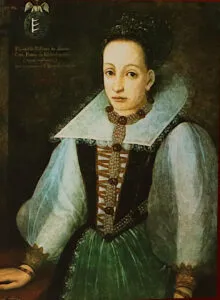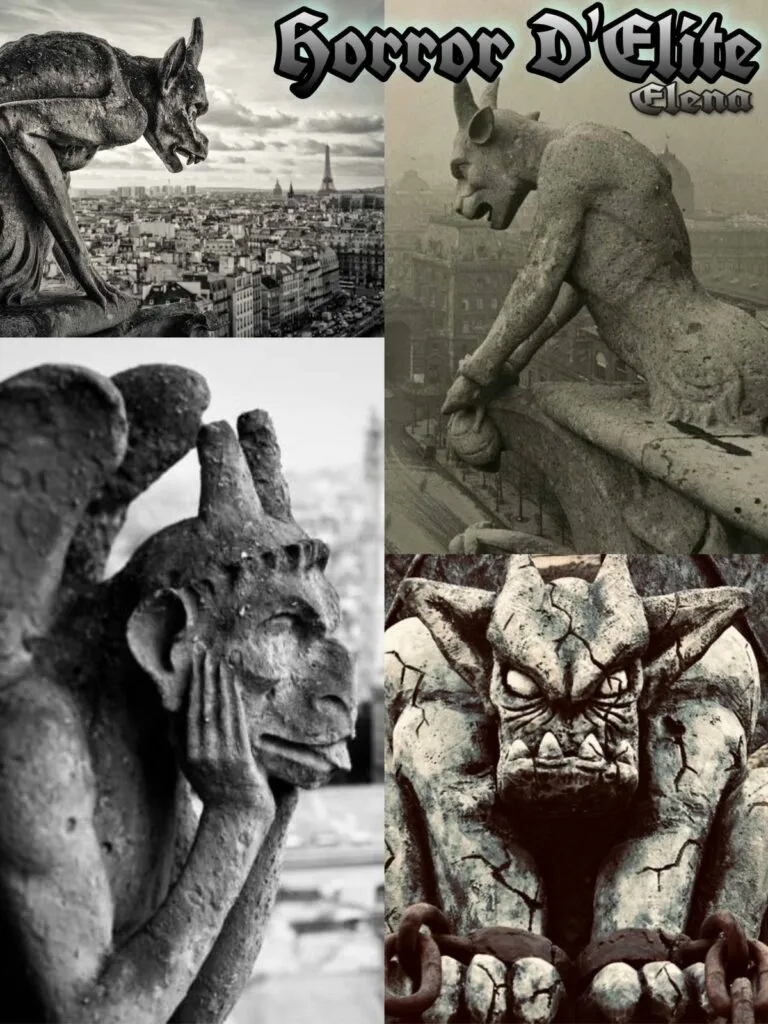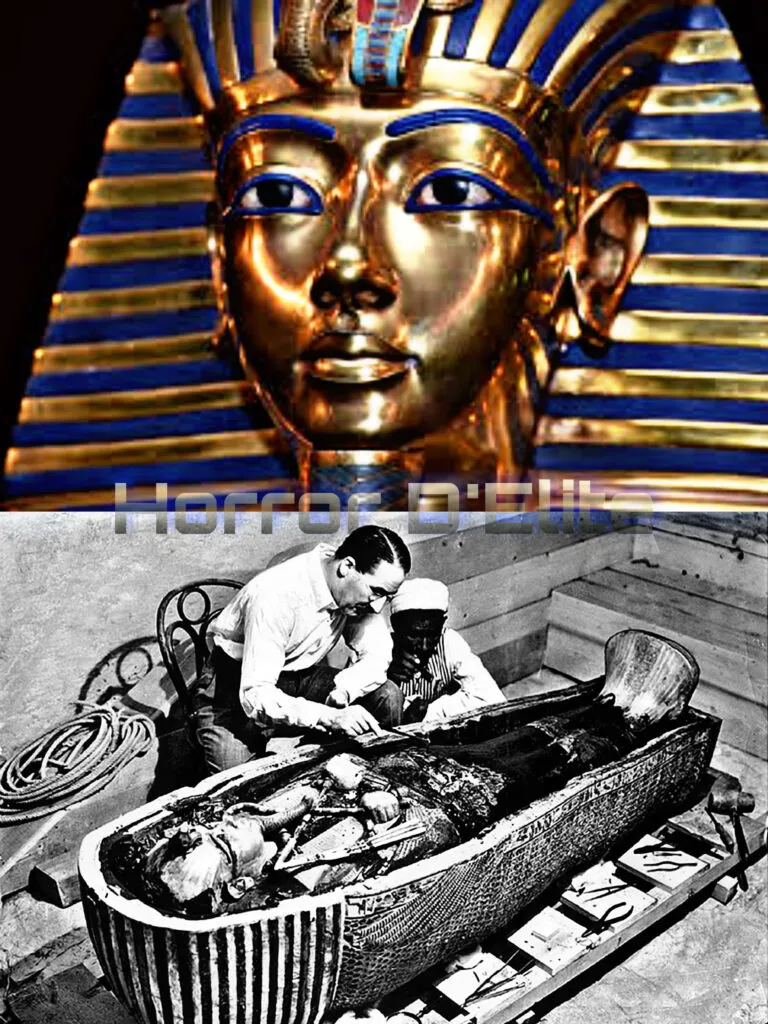Erzsebet Bathory
 The Story of the “Countess Dracula” Erzsebet Bathory
The Story of the “Countess Dracula” Erzsebet Bathory
Erzsébet Bathory descended from one of the oldest and most powerful families of Transylvanian Protestant nobility.
She was the niece of Stephen I Báthory, Prince of Transylvania and brief King of Poland between 1575 and 1586, and among her close relatives were numerous war heroes and some prelates.
Her parents, Countess Anna and George Báthory, lived in their castle in Cachtice, located in present-day Slovakia, surrounded by a small local court.
It was here that their only daughter received a complete education – including the study of languages such as Hungarian, Latin, and German – and, most importantly, adequate care for her infirmity, which some authors have identified as a form of epilepsy, a condition suffered by many family members.
She was only eleven when her father betrothed her to a distant cousin, Count Ferenc Nádasdy, five years her senior, and so, upon reaching puberty, as was customary at the time, she left for Hungary to live with her future family.
Soon after, she was involved in a major scandal by becoming pregnant by one of the castle’s servants.
Furious at such an outrage but determined to enter into a marriage that could assure him power and wealth, Ferenc ordered that the young man be castrated and executed, while his fiancée gave birth in secret.
On May 8, 1575, Ferenc and Erzsebet Bathory were married in Varanno, present-day Slovakia.
Given the importance of the Báthory family, after the marriage Ferenc took on his wife’s name and, along with much of his family, moved to Cachtice where, years later, their four children were born: Anna, Katharina, Ursula, and Paul.
Military duties took Ferenc away from his home on several occasions.
He successfully fought the Turks, and his reputation as a fierce and relentless warrior earned him the title of Black Knight of Hungary.
He seemed invincible, but on January 4, 1604, during yet another campaign against the Ottomans, he died unexpectedly and under circumstances that were never clarified. From that moment on, myth and history intertwined to the point that it is still impossible to distinguish one from the other.
The Life of the Black Knight
The suspicion that Matthias II of Hungary was involved in the death of the Black Knight dates back to the implicit threat posed by the Báthory family to the Hungarian Crown and the extent of the territory they controlled from Cachtice, which the sovereign eyed. With Ferenc gone, the leadership of these estates was left to a 44-year-old widow who, at first glance, seemed manageable.
Facts proved otherwise: as soon as she became a widow, the countess took control of the estate and did not hesitate to ally with her nephew Gábor I, Prince of Transylvania, to fight alongside the Germans against Matthias II of Hungary.
It is highly likely that if the sovereign decided to initiate a trial against a noble house like the Báthory he intended to acquire their estates for the Crown.
Although the first rumors of the princess’s atrocities date back to 1604, Erzsébet Bathory’s cruelty was well known even before she became a widow, as was that of her husband: evidenced by a correspondence in which the couple advised each other on the most effective methods of torture to maintain order and the abuses to which their servants were subjected.
However, it was only after Ferenc’s death that the rumor began to circulate that the countess practiced witchcraft.
A rumor that aligned with the mysterious disappearance of many local young women. It was these very rumors that convinced Matthias II to order the dispatch of György Thurzó.
A Complex Trial
During her detention, Erzsebet was under the custody of Thurzó, who took over the Báthory estate. Within two years, the trial was initiated, held in Bytca, in northwestern Slovakia, and its records (preserved in the National Archives of Hungary) describe horrifying scenes. The “bloodthirsty countess” refused to submit to a court’s judgment, exploiting the privileges associated with her noble status. Her testimony was not needed.
Instead, her closest collaborators were called to testify – the ladies-in-waiting and the castle administrator – who explained how, following the countess’s orders, they had recruited numerous young girls, mostly teenagers, to work as maids or to be part of Erzsébet’s retinue, depending on their social standing.
Once confined in the castle, the young women were tortured in various ways: with beatings and floggings, with pincers, stakes, and hot irons.
In the end, they were buried in the park surrounding the fortress or in the castle dungeons.
Meanwhile, the countess bathed in their blood, believing it would grant her eternal youth.
According to legend, she did this on the advice of a witch who lived in a building adjacent to the castle.
The estimates of the number of victims varied: 36, more than 80, and even 640 were mentioned. The sentence did not take long.
All of Erzsebet’s direct collaborators were found guilty of witchcraft and murder and were executed.
After burning their bodies, their ashes were scattered so that their souls would never find peace.
Imprisoned for Life
Erzsebet Bathory managed to avoid trial due to her noble status but could not escape justice.
The court decreed that she be imprisoned for life in a room of her castle without ventilation or any openings where sunlight could enter. She could communicate with the outside only through a small opening where she received bread and water.
In July 1614, feeling her strength waning, Erzsébet Bathory made her will in front of her jailers.
She died a few weeks later, on August 21 of the same year.
She had wished to be buried in the church of Cachtice, but the villagers opposed a burial in sacred ground.
The village of Ecsed, a domain of the family in northeastern Hungary, agreed to allow her to be buried in the cemetery. All her estate passed into the hands of the Crown.
Erzsebet Bathory remains one of the darkest and most fascinating figures in history and perhaps the first serial killer…
 Subscribe to our YouTube channel
Subscribe to our YouTube channel






